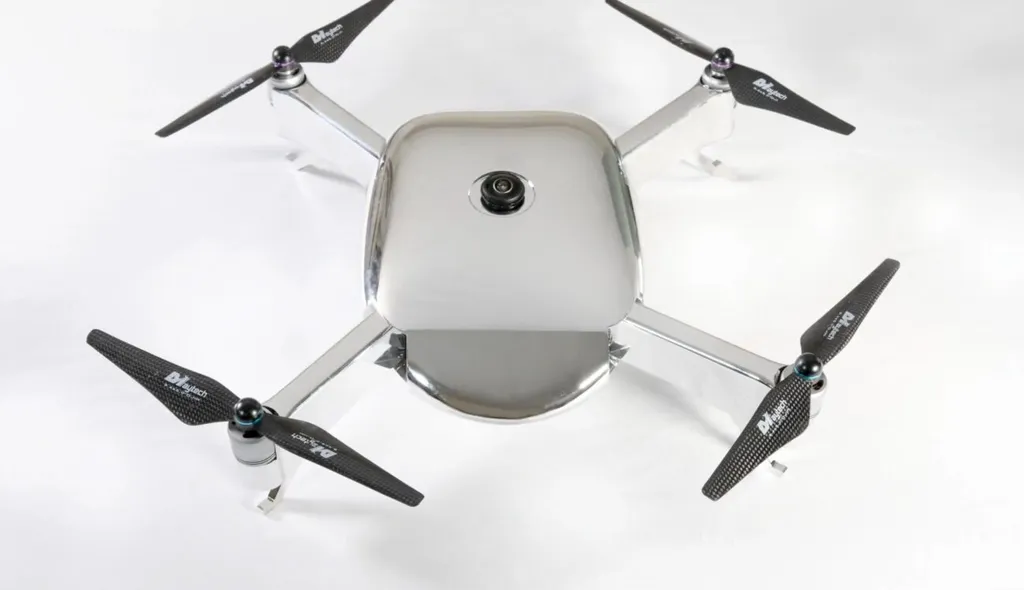In the rapidly evolving landscape of unmanned aerial vehicles (UAVs), a groundbreaking study by Yuhui Wang and Junaid Farooq introduces a novel approach to remote surveillance and virtual reality (VR) applications. Their research, titled “Zero Touch Coordinated UAV Network Formation for 360° Views of a Moving Ground Target in Remote VR Applications,” presents a framework that leverages multiple UAVs equipped with on-board cameras to capture comprehensive 360° views of moving targets. This innovation eliminates the need for human intervention, offering a fully automated and adaptive solution for both military and civilian use.
The core of this research lies in the development of a joint UAV formation and tracking framework. Traditional methods often require manual adjustments to maintain optimal surveillance angles, a process that is both time-consuming and prone to human error. Wang and Farooq’s zero-touch approach, however, automates the reconfiguration of UAVs, ensuring they maintain coordinated positions relative to the moving target. This adaptability is crucial for applications where the target’s movements are unpredictable, such as in military reconnaissance or search-and-rescue operations.
The framework’s ability to reconfigure UAVs without human intervention is particularly noteworthy. By using advanced algorithms, the system can dynamically adjust the positions and orientations of the UAVs to ensure continuous, unobstructed coverage of the target. This capability is demonstrated through simulations that showcase the UAVs’ ability to converge and form an optimal formation from arbitrary initial positions. The simulations also test the system’s performance with varying numbers of UAVs and different mobility patterns of the ground target, proving its robustness and versatility.
One of the most compelling aspects of this research is its potential impact on remote VR applications. In virtual reality, capturing a 360° view of a moving target is essential for creating an immersive experience. The proposed framework allows multiple UAVs to capture different, partially overlapping angles of the target, which are then stitched together to provide a seamless 360° view. This technology could revolutionize fields such as virtual tourism, remote inspections, and even military training simulations, where accurate and comprehensive visual data is paramount.
The implications of this research extend beyond VR and surveillance. In military applications, the ability to autonomously coordinate UAVs for 360° coverage of a moving target enhances situational awareness and operational efficiency. This can be particularly valuable in dynamic and high-risk environments where human operators may face significant challenges. Similarly, in civilian applications, such as environmental monitoring or infrastructure inspections, the zero-touch approach can provide reliable and continuous data collection without the need for constant human oversight.
The study’s findings are supported by extensive simulations that demonstrate the framework’s effectiveness. The simulations show that the UAVs can successfully adapt to various mobility patterns of the ground target, ensuring continuous and comprehensive coverage. This adaptability is a testament to the robustness of the algorithms driving the zero-touch approach, which can handle a wide range of scenarios and initial conditions.
In conclusion, the research by Yuhui Wang and Junaid Farooq represents a significant advancement in the field of UAV technology. By introducing a zero-touch coordinated UAV network formation framework, they have addressed key challenges in remote surveillance and VR applications. The framework’s ability to autonomously reconfigure UAVs for 360° coverage of moving targets opens up new possibilities for both military and civilian use. As the technology continues to evolve, it is likely to play a crucial role in enhancing the capabilities of UAVs in various domains, ultimately contributing to safer, more efficient, and more effective operations. Read the original research paper here.

